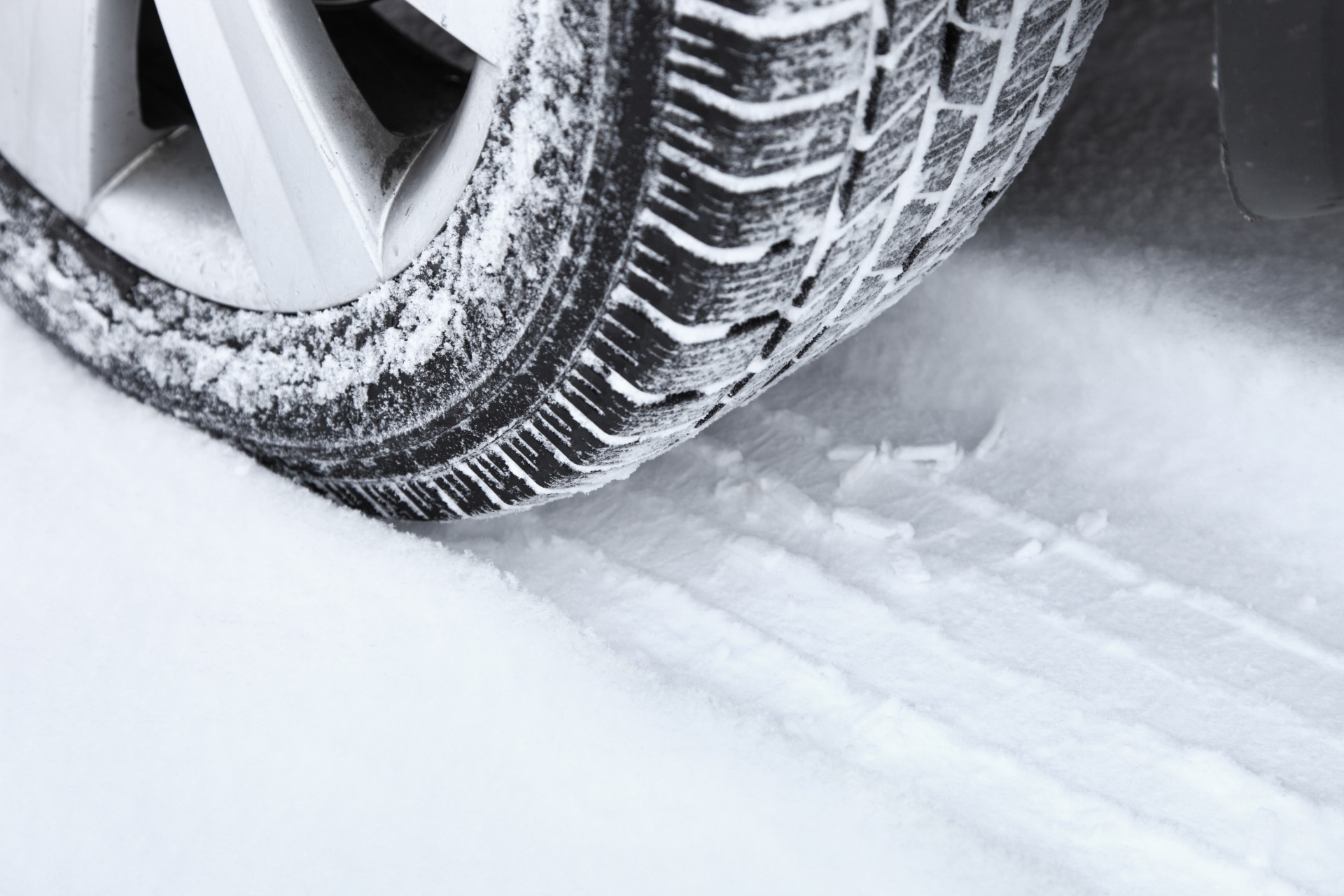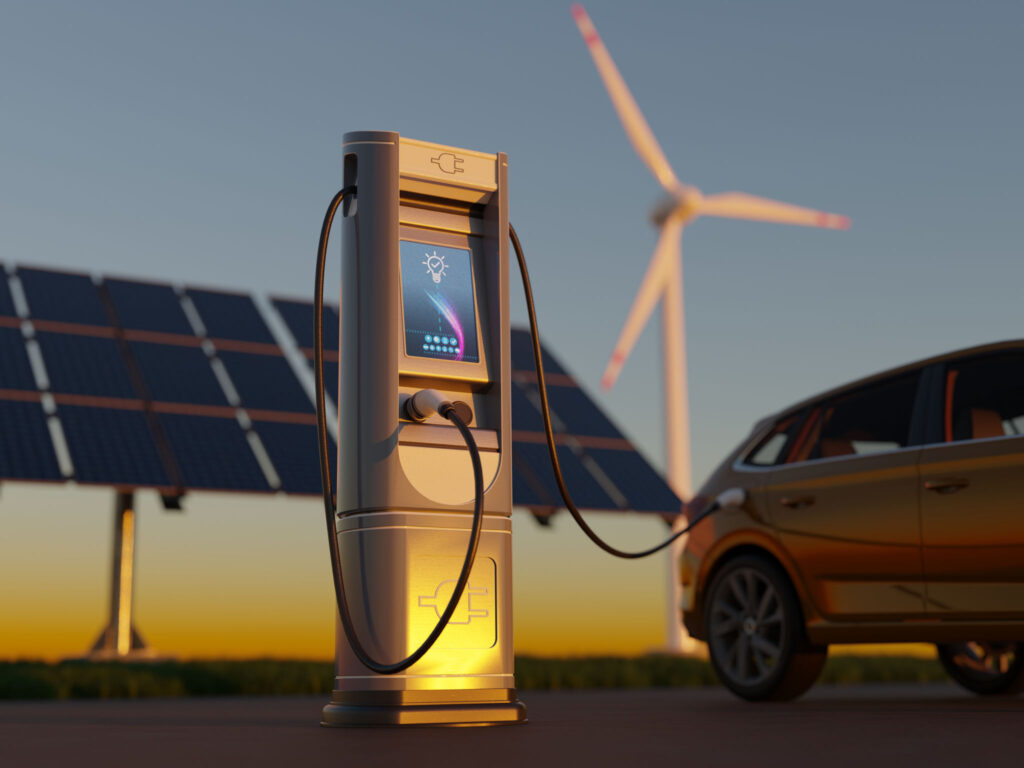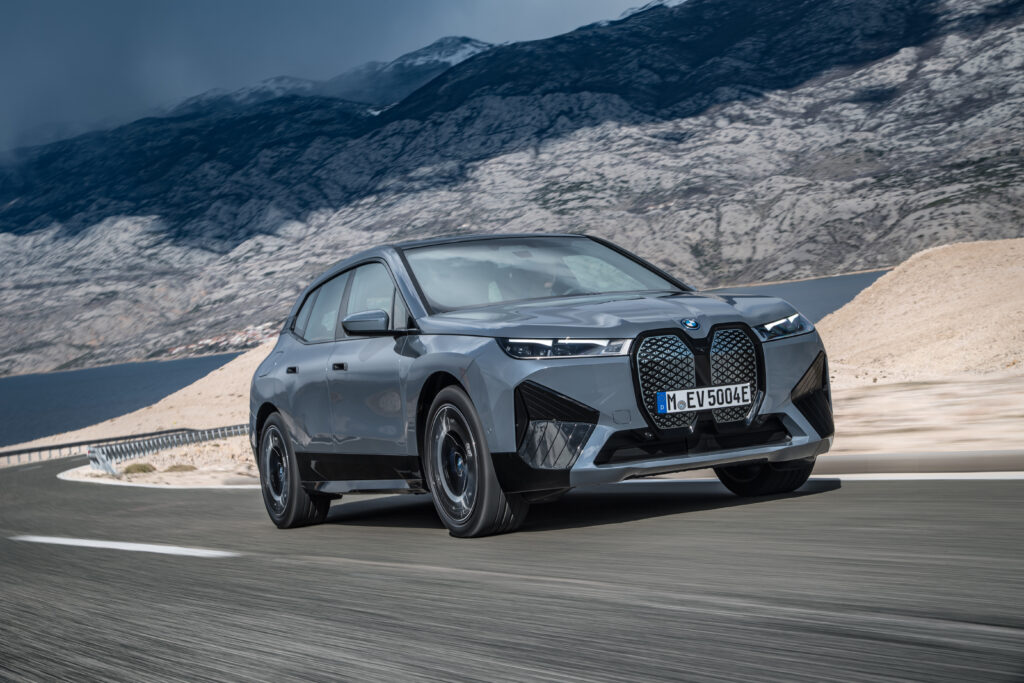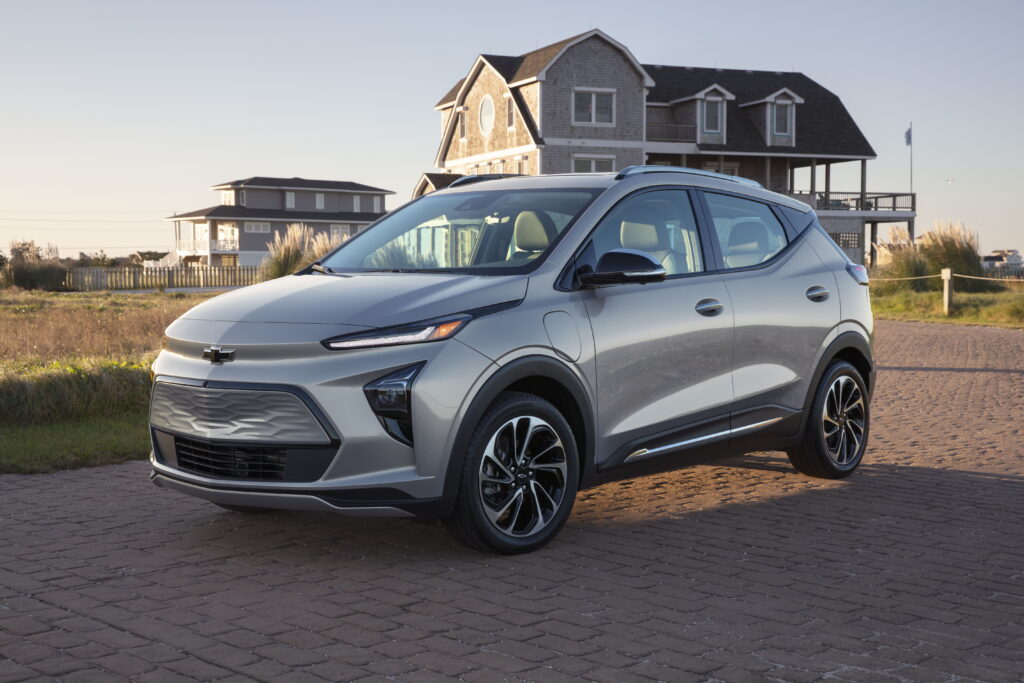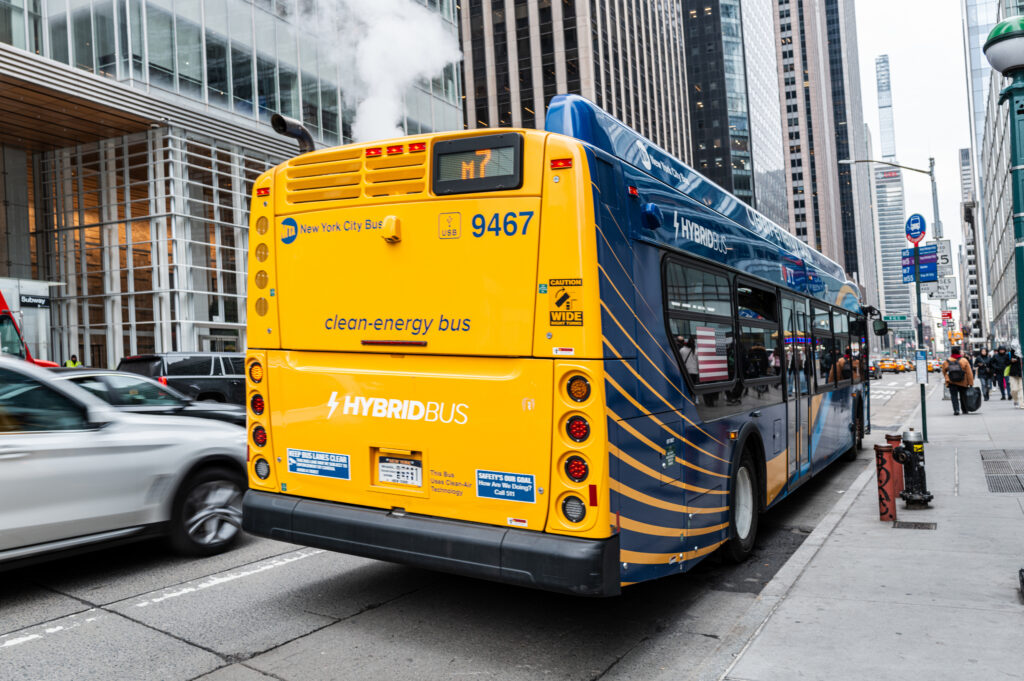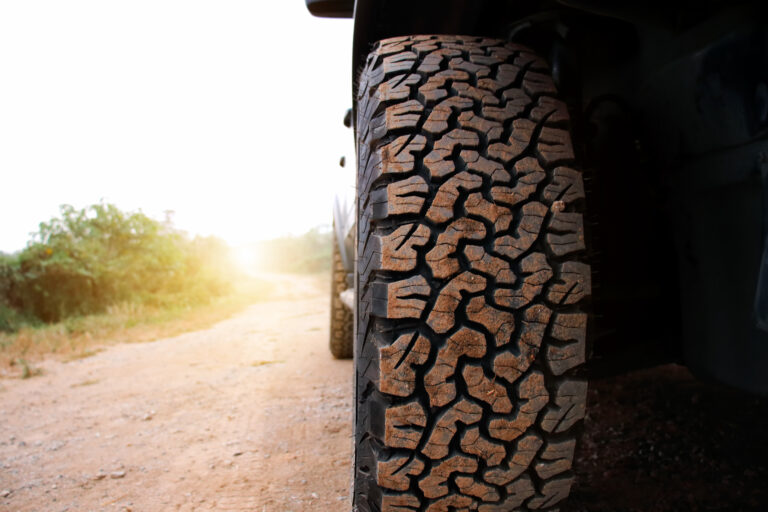
Of all of the issues discussed when it comes to EVs, range seems to be the most ubiquitous. Perhaps it’s because range feels like a new concept to many drivers, and much is made out of how conditions and driving habits may affect your car’s range. So, what can you do to extend range in your EV? Aside from driving habits, the most important factor a driver has any control over are the tires and wheel size – so let’s dive into that.
According to energy.gov 20% to 30% of a gas vehicle’s fuel consumption are tire related, and the factors that determine tire performance are rolling resistance, tread type, wear and size.
Rolling resistance is defined as the measure of force at the axle in the direction of travel required to make a loaded tire roll. In layman’s terms – rolling resistance measures how much energy the vehicle must use to make the tires roll along the road. Tires with low rolling resistance use both modern tread design and new materials to minimize the amount of gasoline or electricity required to move the car. A tire with amazing rolling resistance can use three times less energy to travel than one with terrible rolling resistance.
The most significant factor in reducing rolling resistance is referred to as hysteresis. This is the process that happens when a tire flexes, or spreads, as it meets the road surface, leading to energy loss that inhibits forward momentum. Studies have shown that hysteresis accounts for as much as 85% to 90% of rolling resistance, so reducing it is a key objective of tire manufacturers. Tire companies are constantly developing better tires with new compounds and tread designs to reduce hysteresis.
Have you ever wondered why race cars have no tread at all? That’s because tires with no tread have the least amount of rolling resistance. For our driving needs and safety, we cannot have totally treadless tires, but the next best thing is a shallow tread design. This will help decrease the hysteresis and rolling resistance. Deeper tread patterns tend to have more hysteresis, since the treads will spread at the point where the rubber hits the road, flattening the tire and creating resistance. A more shallow tread will not flatten as much, creating less resistance.
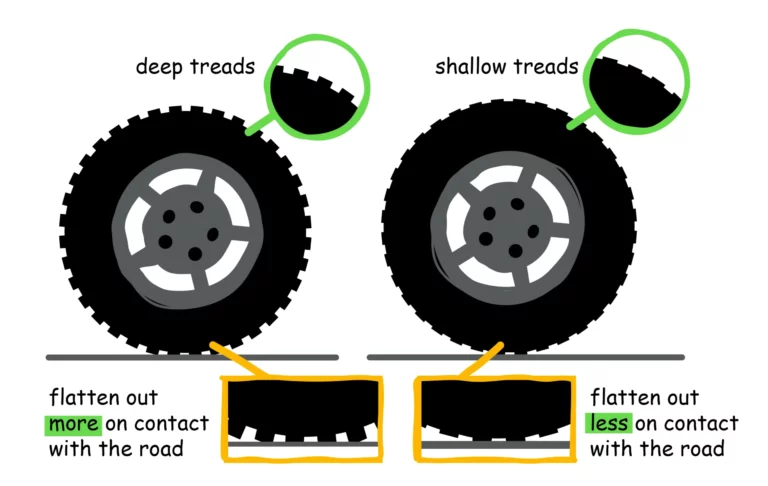
You might think that a shallower tread will wear out faster, but that is not the case. Tire companies have developed new, more durable compounds so that a shallow tread design will not sacrifice tire life. The two main synthetic rubber polymers used in tire manufacturing are butadiene rubber and styrene butadiene rubber. These rubber polymers are used in combination with natural rubber. Physical and chemical properties of these rubber polymers determine the performance of each component in the tire as well as the overall tire performance (rolling resistance, wear and traction).
Out of all of the parts of a car, the only ones to actually touch the road are the tires (hopefully). The size of your tires is important for comfort, handling and safety, but also for range. In general, smaller tires will have higher range. But many drivers consider the aesthetics or function of a larger tire. Personally, I did this when I put 31.5 inch tires on my Toyota 4Runner. They looked cool, but largely affected my gas mileage. A larger tire would similarly affect the range of an EV.
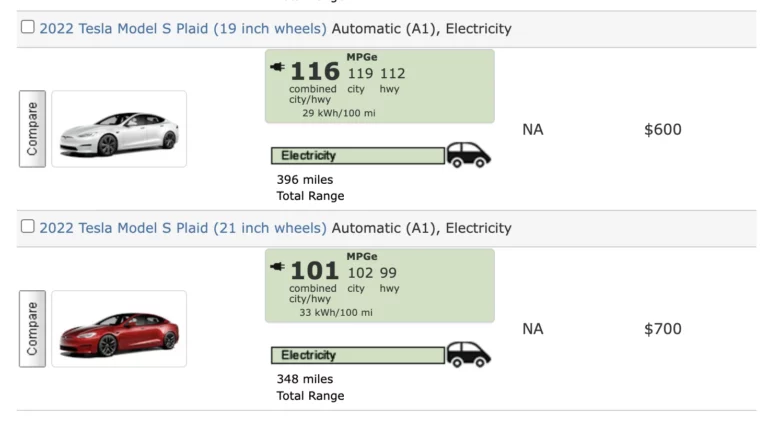
According to the EPA data, the Model S Plaid with 19-inch wheels has a 396-mile range, but the same car with 21-inch wheels has only a 348-mile range, and you pay more for 21-inch wheels. Would you pay more to get less range or because it looks better? That’s totally up to you.
Larger tires tend to decrease your range for a number of reasons:
They are heavier and more weight requires more energy to move.
They are often wider, and this creates more aerodynamic (wind) resistance at higher speeds.
A larger portion of the tire comes into contact with the road leading to more hysteresis and therefore, increased rolling resistance.
When you combine these factors, it’s not hard to figure why a larger tire will result in less range, especially in stop-and-go driving. It takes more energy from the motor and battery to get a larger tire rolling. If you use your EV for city driving or errands, this can mean a lot of time at a stop sign or traffic signal. On the other hand, a narrower tire with a wider sidewall will tend to increase fuel economy or range for all the same reasons. his sort of tire weighs less, typically has less rolling resistance and needs less energy to get in motion.
In stop and go traffic, the smaller tire would maximize your range.
So why would you ever get a larger tire? The main reason manufacturers might use a larger tire is to provide more comfort and stability. A wider tire has more area in contact with the road, which leads to better handling. Drivers may also live in climates where wider, bigger snow tires are recommended in the winter, or where larger tires are important to increase traction with wet roads. Larger tires also improve handling and performance if you plan on driving your car hard. And it’s worth mentioning that tire width, on its own, does not contribute that much to range loss. Factors such as size and rolling resistance have a much larger effect.
Note that with many newer model EVs, tire size may not be just about range. For instance, for its everyday road configuration, Rivian offers 21-inch wheels with road tread, a 265/40R21 narrow tire, and more shallow tread design. This configuration gets 321 miles of range. Their upgrade option for off-road use has a smaller, 20-inch wheel, but only gets 289 miles of range. This is because the entire package is designed for different purposes: it is a wider, 275/50R20 tire with a wider tread design.
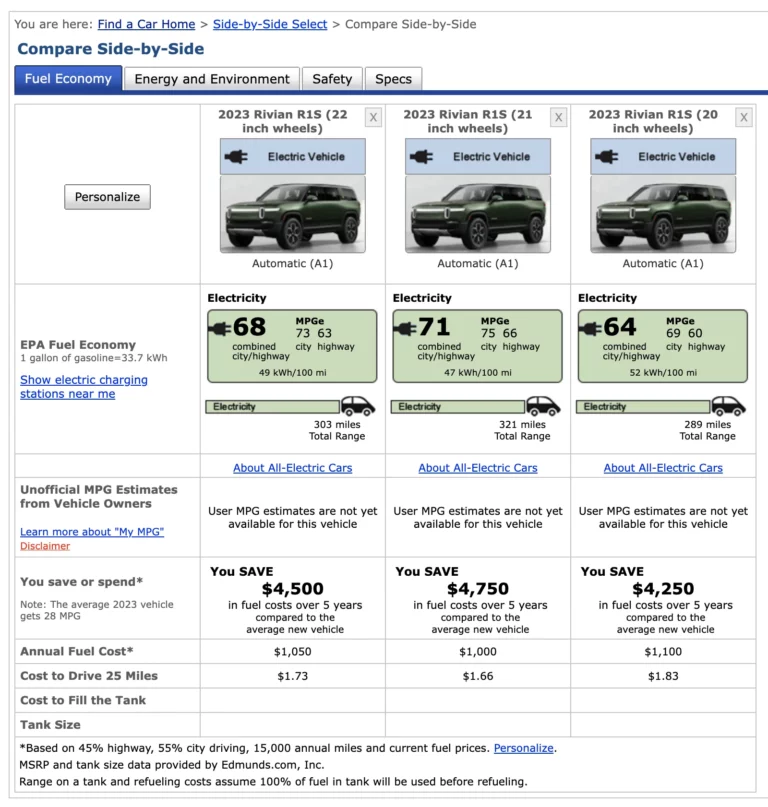
Finally, manufacturers also understand that purchases are often driven by the aesthetics of a vehicle and beefier tires tend to move the needle for certain carbuyers.
Keeping that in mind, other factors like tire pressure and alignment, vehicle weight, load and distribution, all have their part to play. The more tire pressure falls below its optimal level, for example, the greater the rolling resistance will be. If a tire on a 22.5-inch wheel is under-inflated by 20% from its recommended inflation pressure, the rolling resistance will increase by around 6% compared to a tire with the correct air pressure.
Visit Recurrent to learn more about electric vehicle battery health.
This article is originally researched and written by the team at Recurrent.
AAA’s Recommendation: Whether you own an electric vehicle or a gas-powered car is up to you – and you should consider lots of factors in making that choice. No matter what type of vehicle you’re choosing, we recommend visiting a dealership, test driving one, and asking as many questions as possible to make an informed decision.












